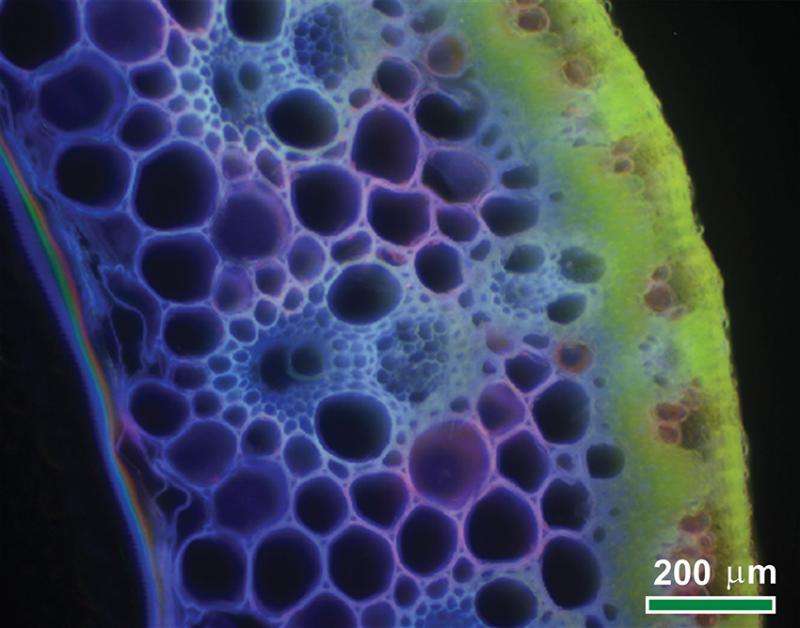Better understanding could lead to more cost-effective production of cellulosic biofuels

Plant cell walls, which constitute the bulk of plant biomass, are diverse, complex, and dynamic in their structural composition and integrity. Cell walls are innately resistant to deconstruction by biological or chemical catalysts. This property is often referred to as recalcitrance, and recalcitrance is considered the primary barrier to cost-effective production of cellulosic biofuels. Pretreatment of plant biomass can loosen the structural integrity of cell walls, reducing their recalcitrance to deconstruction, and this study provides insights into how pretreatment induces such cell wall modifications in different types of biomass.
An in-depth understanding of pretreatment-induced modifications to cell wall components in diverse plant biomass may help to identify the components that contribute to recalcitrance and thus facilitate the targeting of those components for genetic modification to ease production challenges for renewable fuels.
Researchers at the U.S. Department Energy's (DOE) BioEnergy Science Center and Great Lakes Bioenergy Research Center examined samples from various plant species using newly emerging experimental approaches for cell wall analysis. An AFEX (ammonia fiber expansion) pretreatment method was employed on some of the samples to alter cell wall composition and architecture. These altered walls were then characterized using glycome profiling to identify changes in the walls that lead to reduced recalcitrance and consequently draw inferences about overall cell wall architecture in the various plants tested. In general, the researchers found that AFEX pretreatment causes loosening and improved accessibility of different glycans within plant cell walls, but that these effects vary significantly depending on the type of biomass.
More information: Sivakumar Pattathil et al. Insights into plant cell wall structure, architecture, and integrity using glycome profiling of native and AFEX-pre-treated biomass, Journal of Experimental Botany (2015). DOI: 10.1093/jxb/erv107
Provided by US Department of Energy





















